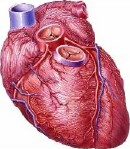
THURSDAY, May 14, 2015 (HealthDay News) — Botox, the toxin-turned-drug therapy best known for its wrinkle-reducing properties, shows potential for preventing dangerous heart rhythms in patients who undergo invasive heart surgery, a small, preliminary study found.
At issue is the risk for atrial fibrillation — a potentially fatal irregular beating of the heart — in patients who undergo coronary artery bypass graft, the most common form of open-heart surgery in the United States, the study authors said.
Currently, there are no measures specifically designed to lower this risk. That means that between 30 percent to 40 percent of people who have the bypass surgery will develop atrial fibrillation, which increases the risk for both stroke and congestive heart failure, the researchers said.
But the researchers reported Thursday that by injecting Botox (botulinum toxin) once into the heart’s fat tissue — called epicardial fat pads — during heart surgery, the risk of atrial fibrillation was nearly eliminated for as long as a year after the surgery.
“Botox is a poison,” explained study lead author Dr. Evgeny Pokushalov, a professor of medicine at the State Research Institute of Circulation Pathology in Novosibirsk, Russia. “Which means it can be dangerous. So we first tested it for the purpose of reducing heart rhythm risk in animals a year ago. And now we’ve completed a pilot human trial at two hospitals with 60 patients. And what we have now is a preliminary proof of concept that we can use Botox as a way to prevent the opportunity for any atrial fibrillation after surgery.”
Pokushalov and his team, which included researchers from the United States, were scheduled to present their findings Thursday at the Heart Rhythm Society’s annual meeting in Boston. Research presented at medical meetings is considered preliminary because it hasn’t been published in a peer-reviewed journal.
Pokushalov said it’s very difficult to know in advance which heart surgery patients will develop post-op atrial fibrillation, “though about 30 percent of patients with no past history will experience it,” he added.
His team’s main goal: to test Botox’s effectiveness at lowering the risk of atrial fibrillation during the critical one-to-three week period immediately following surgery. “That’s the highest risk moment,” he said.
The study included 60 patients who had a history of atrial fibrillation before their surgery. Half the patients had Botox injected directly into the heart fat during surgery; the other half received a dummy injection.
There were no immediate complications from either type of injection, and there were no complications for the length of the study, which lasted for one year post-surgery.
Only 7 percent of the patients who received Botox went on to experience atrial fibrillation during the pivotal one-to-three-week period following surgery. This compared with 30 percent of patients who didn’t get Botox.
Also, slightly more than one-quarter of the non-Botox group experienced recurring bouts of atrial fibrillation during the 11 months following surgery. In contrast, none of the Botox patients experienced atrial fibrillation during the same time frame.
“Of course, we need to continue to look at this with a wider, bigger study that has more patients,” Pokushalov said. “But the data we already have is good. And it could lead to a big change for how we handle patients who undergo open-heart surgery.
“We might also be able to use this technology following any type of invasive surgery,” he added. “And also for patients who don’t undergo surgery at all but are at a high risk for atrial fibrillation. This is something we are looking into in the future.”
In addition to smoothing facial wrinkles, Botox has been approved for the treatment of migraine headaches, overactive bladder and excessive underarm sweating, among other uses.
Dr. Michael Chancellor, a urologist and director of the Aikens Neurourology Research Center at Beaumont Health System in Royal Oak, Mich., said he was impressed with the research and its findings.
“I think the concept is intuitive, it makes sense to me,” he said. “Because the way it [Botox] would work to limit atrial fibrillation is analogous to the way it works to prevent and block the nerve-mediated pain and neurotransmitter activity seen, for example, in migraines. And Botox is already approved for the treatment of migraines.
“So I’ll certainly be looking forward to more work from this group and future groups as they continue to explore this treatment concept.”
More information
To learn more about Botox, visit the U.S. National Institutes of Health.
Copyright © 2025 HealthDay. All rights reserved.

